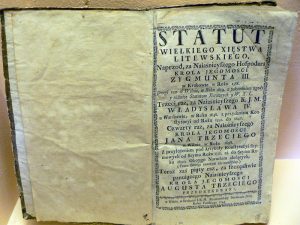Table of Contents
Introduction
A statute is an edict of the legislature. It is an established rule, formal regulation or ordinance enacted by the legislature. The language used in the statute is the determinative factor of the legislative intent. Salmond also says that “The essence of the law lies in its spirit, not in the letter, for the letter is significant only as being the external manifestation of the intention that underlies it.”
The duty of the judiciary is to discover and act upon the intention of the legislature: the intention of those who make it, that is the mens or sententia legis.
Methods Of Interpretation
Interpretation is usually either “legal” or “doctrinal“. It is ‘legal’ when there is an actual rule of law which binds the judge to place a certain interpretation on the statute. It is ‘doctrinal’ when its purpose is to discover the real or true meaning of the statute.
Legal interpretation is again divided into “authentic” and “usual“. It is ‘authentic’ when the rule of interpretation is derived from the legislator himself; it is ‘usual’ when it comes from some other source such as custom or case laws.
Doctrinal interpretation may be either “grammatical” or “logical“. It is ‘grammatical’ when the court simply applies the ordinary laws or speech in order to find the meaning of the words used in the statute. It is ‘logical’ when the court goes beyond the words and tries to discover the intention of the statute in some other way.
As far as construction of a statute is concerned, the obvious method is literal interpretation. Literal meaning is the ordinary, plain meaning of the word. If the meaning is clear and unambiguous, effect should be given to the provision of a statute. But in a modern democracy, this method would not work, as every law is a result of a parallelogram of forces. The courts have not stuck to this rule and they have held that alternative shades of meaning may be chosen when the literal meaning leads to absurdity or inconvenience.
This has given rise to the rule that context prevails and one must choose a meaning for the words according to the context. One must remember that a word changes its meaning like a chameleon according to the context in which it is used. In fact, every word has two meanings:
- Its Denotation (Dictionary Meaning),
- Its Connotation (meaning obtained by its association with other words).
Thus, words are interpreted noscitur a sociis-in short, a word is known or understood by the company it keeps. Here context must mean the entire Act. A fitting context avoids absurdity and inconvenience and also avoids conflict with other sections of the Act.
Primary Rules Of Interpretation
There are certain basic or primary rules which are followed for the Interpretation of Statutes. Thus, interpreting statutes involves several key principles such as:
- The Primary Rule: Literal Construction
- The Mischief Rule or Heydon’s Rule
- Rule of Reasonable Construction i.e. Ut Res Magis Valeat Quam Pareat
- Rule of Harmonious Construction
- Rule of Ejusdem Generis
Literal Rule or Strict Construction
Lord Tindal defined Literal Rule as, “The words themselves alone do best declare the intention of the lawgiver”. The rationale behind this was to maintain the faith of the general public on the Legislative bodies and not giving the power to make laws in the hands of the Judges the way of Interpreting Statutes.
The basic rule of construction is that the language of the statute must be construed in its grammatical and literal sense and hence it is termed as litera legis or litera script. According to this rule, the words, phrases and sentences of a statute are ordinarily to be understood in their natural, ordinary or popular and grammatical meaning unless such a construction leads to an absurdity.
The idea behind such a principle is that the legislature, being the supreme law making body must know what it intends in the words of the statute. Literal interpretation has been called the safest rule because the legislature’s intention can be deduced only from the language through which it has expressed itself.
In the case of Nand Prakash Vohra v. State of H.P., AIR 2000, If there is nothing to modify, alter or qualify the language which the statute contains, it must be construed according to the ordinary and natural meaning of the words. “The safer and more correct course of dealing with a question of construction is to take the words themselves and arrive, if possible, at their meaning without, in the first instance, reference to cases.”
“Whenever you have to construe a statute or document you do not construe it according to the mere ordinary general meaning of the words, but according to the ordinary meaning of the words as applied to the subject matter with regard to which they are used”.
It is a corollary to the general rule of literal construction that nothing is to be added to or taken from a statute unless there are adequate grounds to justify the inference that the legislature intended something which it omitted to express.
While discussing rules of literal construction the Supreme Court in State of H.P v. Pawan Kumar (2005) held that, “One of the basic principles of interpretation of statutes is to construe them according to plain, literal and grammatical meaning of the words.
- If that is contrary to, or inconsistent with, any express intention or declared purpose of the Statute, or if it would involve any absurdity, repugnancy or inconsistency, the grammatical sense must then be modified, extended, abridged, so far as to avoid such an inconvenience, but no further.
- The onus of showing that the words do not mean what they say lies heavily on the party who alleges it.
- He must advance something which clearly shows that the grammatical construction would be repugnant to the intention of the Act or lead to some manifest absurdity.”
Other Principles Of Literal Construction
Addition is permissible in the following cases
- Where the alternative lies between either supplying by implication words which appear to have been accidentally omitted or adopting a strict construction which deprives certain existing words of all meaning, it is permissible to supply the words.
- To avoid any part of the statute becoming meaningless.
- To give effect to the legislative intent which is apparent from the act read as a whole;
- To give effect or advance the purpose which Parliament intended to achieve.
Before the court adds, omits or substitutes words, it has to make sure of the following matters
- Intended purpose of the statute, or provision.
- Effect to the purpose not given by inadvertence of the draftsman and Parliament.
- Had the error been noticed, the substance of the provision that would have been made by Parliament
- Where a choice has to be made out of two constructions, both of which require reading of certain additional words, that construction would be preferred by the court which is more in consonance with reason or justice.
- In Order to reconcile two apparently inconsistent provisions, it is permissible to read words such as “subject to” or “notwithstanding anything”. Cross reference may be read by implication to remove the inconsistency.
Advantages of Literal Rule
- It helps to define the statute precisely, and not in a fashion that smuggles in the answer to the question before the decision-maker.
- It helps to derive the purpose from the statute itself, not from extrinsic sources such as legislative history or an assumption about the legal drafter’s desires.
- It also makes the Act and its provisions easy to understand for the general public.
- It also helps restrict the Judiciary from creating laws contrary to the provisions of the Statute.
Disadvantages of Literal Rule
- It restricts the scope of deriving meaning from the context of the Statute, because this rule rests on the assumption that there is only one meaning for a particular word.
- It creates absurdity which means that it makes the provision vague and inconsistent with the whole Statute,
- The strict adherence to this principle may cause injustice and sometimes it might give results which are quite contrary to the general intention of the statute or common sense.
- The rule expects standards of unattainable perfection from the parliamentary draftsman.
Application Of Literal Rule In Indian Courts
Kanai Lal v. Paramnidh
The court held that, “It must always be borne in mind that the first and primary rule of construction is that the intention of the Legislature must be found in the words used by the legislature.”
It also stated “When the material words are capable of two constructions, one of which is likely to defeat or impair the policy of which is likely to defeat or impair the policy of the Act whilst the other construction is likely to assist the achievement of the said policy, then the courts would prefer to adopt the latter construction.”
S.A.Venkataraman vs The State
The court said that this case dealt with Section 6 of the Prevention of Corruption Act. It was to do with taking a sanction from an appropriate authority. It considers only the present working employees as employees, those who have retired are not considered as employees. The court said, “In construing the provisions of a statute it is essential for a court, in the first instance, to give effect to the natural meaning of the words used therein, if those words are clear enough.”
Ramavtar Budhai Prasad v. Assistant Sales Tax Officer
The Supreme court was faced with a question with the meaning of “vegetable”, as it had occurred in the C.P and Berar Sales Tax Act, 1947 as amended by Act of 1948,whether the word vegetables included betel leaves or not. The Supreme Court held that “Being a word of everyday use, it must be construed in its popular sense”. It was therefore held that betel leaves were excluded from its purview.
Jitender Tyagi vs Delhi Administration (1989)
Where language of a statute is plain and clear indicating only one meaning, the question of ascertaining the legislative intention does not arise. Similarly, where language is plain and no other meaning is possible, the court must give effect to the plain meaning even if there is likelihood of such meaning exposing the provisions to attack on ground of its unconstitutionality. Thus, judges are not free to add or to take away from a sentence even a word or to modify it only because they feel that doing so would correctly express the intention of the legislature.
Supreme Paper Mills Ltd vs CCT (2010)
“It is a well-settled principle in law that the court cannot add anything into a statutory provision, which is plain and unambiguous. Language employed in a statute itself determines and indicates the legislative intent. If the language is clear and unambiguous it would not be proper for the court to add any words thereto and evolve some legislative intent not found in the statute.”
Conclusion
Thus, we can conclude that Literal Interpretation takes into account the verbal expression of law. Here, the court does not travel beyond litera legis. Words of a statute are first to be understood in their natural, ordinary and popular sense. The phrases and sentences are to be construed according to their grammatical meaning. But in both cases, the construction should not lead to some absurdity or contradiction.
Reference Links


